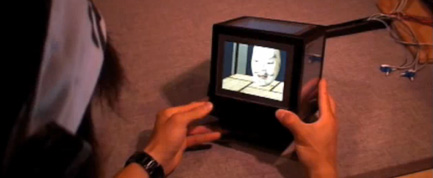Is 3-D TV Dangerous?

3-D television looks awesome, but can it be hazardous to your health?
That's what many are wondering now that electronics giant Samsung issued guidelines on its Web site warning consumers of potential health risks associated with the emerging technology.
The warning advises parents to monitor their children as they watch 3-D, and cautions that it could trigger seizures: "If you experience any of the following symptoms, immediately stop watching 3D pictures and consult a medical specialist: (1) altered vision; (2) lightheadedness; (3) dizziness; (4) involuntary movements such as eye or muscle twitching; (5) confusion; (6) nausea; (7) loss of awareness; (8) convulsions; (9) cramps; and/or (10) disorientation. .... Viewing in 3D mode may also cause motion sickness, perceptual after effects, disorientation, eyestrain, and decreased postural stability."
Part of the reason that Samsung is being careful to disclose potential risk is that they don't want a repeat of what happened to Nintendo over the Pokémon Panic. The most famous case of television screens causing epileptic seizures occurred in 1997, when (according to some news reports) up to 12,000 children reported illnesses ranging from nausea to seizures after watching an episode of the cartoon Pokémon. The TV show was pulled off the air, and the Japanese public panicked at the thought that their children were endangered by flashing lights in a cartoon.
Despite many studies and theories, a clear cause of the panic remained elusive for years. In 2000, I investigated the incident and solved the mystery, demonstrating that while some children did endure brief seizures from the cartoon, the vast majority of those affected did not. It was instead a case of mass sociogenic illness, better known as mass hysteria (for more, see "Pokémon Contagion: Photosensitive Epilepsy of Mass Psychogenic Illness?" in the February 2001 Southern Medical Journal).
The people most at risk are those who have a medical history of photosensitive epilepsy, which occurs in about 1 in 5,000 people (about 0.02 percent of the population). In these people, excessive visual stimulation can, under certain circumstances, induce seizures in the brain's occipital lobe. The 3-D aspect is mostly incidental to the seizures, though watching 3-D can lead to eyestrain, fatigue or nausea in many.
The general public shouldn't be concerned about the risks of seizures. Repetitive motion injuries (such as from pushing buttons and joysticks on video game controllers) are a far bigger health problem than having a seizure. The key, of course, is moderation. Sitting in front of a television for many hours (with or without 3-D) is not a good idea.
Sign up for the Live Science daily newsletter now
Get the world’s most fascinating discoveries delivered straight to your inbox.
So why the warning? According to Samsung, "We feel it would be prudent for Samsung as a responsible company to inform consumers of every aspect of 3-D TV, including potential side effects." In other words, don't sue us if little Timmy gets blurry vision and an unexplained migraine halfway through an all-night 3-D TV marathon.
Benjamin Radford is managing editor of the Skeptical Inquirer science magazine. His books, films, and other projects can be found on his website. His Bad Science column appears regularly on LiveScience.

Stone Age quiz: What do you know about the Paleolithic, Mesolithic and Neolithic?
EVs could charge 500% faster in sub-freezing weather thanks to simple new manufacturing trick
Gamma-ray bursts reveal largest structure in the universe is bigger and closer to Earth than we knew: 'The jury is still out on what it all means.'










